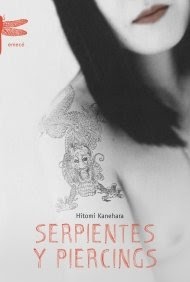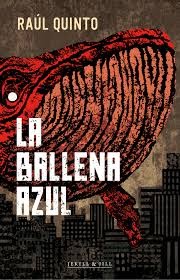
Original language: Japanese
Original title: Hebi ni piasu
Translation: Makiko Tsujimoto
Year of publication: 2004
Valuation: Alright
Hitomi Kanehara is a somewhat particular writer on the Japanese literary scene, even for the image of the Japanese in general. Emerging on the literary scene in the mid-2000s, Kanehara quickly gained recognition with her debut novel “Hebi ni Piasu,” which explores themes of alienation and identity within youth subculture through characters who challenge (or who They remain outside of social norms through extreme body modifications, such as the forked tongue, which the title alludes to.
Liu, a young woman who runs away from home, begins a relationship with Ama: an outcast, tattooed and pierced, whose greatest attraction for Liu is his forked tongue; and with Shiba, the tattoo artist, almost a guru for Ama and Liu. Fascinated by this new world, Liu allows herself to be drawn into extreme situations, including body modifications, drugs and sadomasochism.
Kanehara intimately incorporates elements of underground culture, reflecting his own youthful experiences, including self-esteem issues and depression, as well as forays into the underworld of piercings and body modifications (we’re talking about 20 years ago, within an extremely conservative). If you look for photos of her on the internet, she looks more like a gyaru than an Akutagawa-winning writer. And I don’t say this to reinforce prejudice, but to give an example of the reasons that made it controversial at the time. Today she is already a well-known author, with her book even adapted into a movie that you can see on Netflix (although it is not very good). These personal experiences not only enrich their stories with authenticity, but also serve as an engine for the search for self-expression and belonging in an environment that often marginalizes what is different.
On the negative side, there are situations that seemed a little implausible to me and that are only there for the shock value. Furthermore, Ama’s main attribute is her forked tongue; Outside of that, he seems like an X guy to me. There is no coherent philosophy about what he does, that’s what the other character, Shiba, is for, who tries to give depth to his lifestyle, which is not completely fulfilled. I understand that there is the element that much of his actions have no other objective than to go against something. However, some situations seem simply absurd to me.
By the way, many of the situations that occur in the book are supposedly autobiographical, including the part where the girl runs away from home. Digging a little deeper, we learned that Kanehara’s father was a literature professor and continued to support his daughter (and, I imagine, giving her rent), corrected the manuscript, and was an important part of her winning the Akutagawa Prize. I don’t want to take away from her merit as a writer, but her image as an outcast may be a bit exaggerated.
Source: https://unlibroaldia.blogspot.com/2024/10/hitomi-kanehara-serpientes-y-piercings.html


